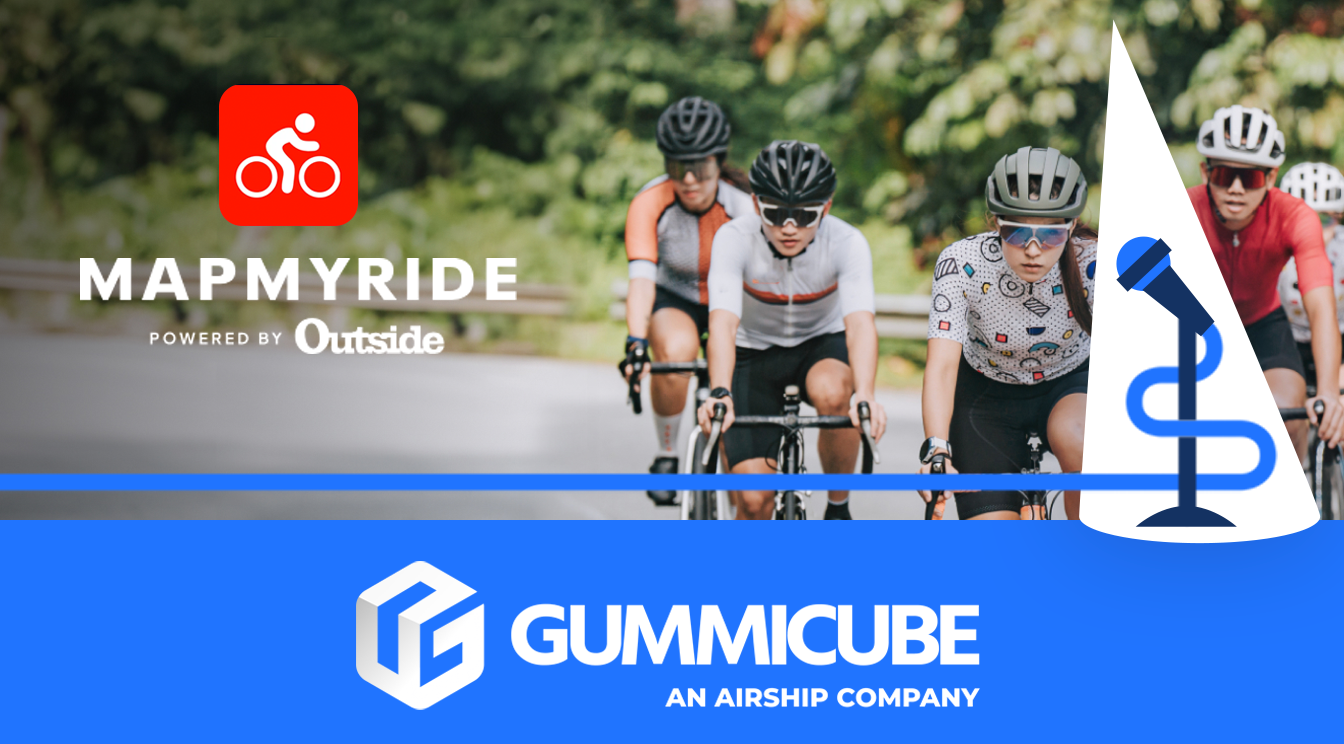
A Glimpse into SkyView's ASO Universe
Posted on October 3rd, 2025
SkyView Lite's App Store listing misses key ASO opportunities. We analyze its metadata, screenshots, and compare it to Night Sky for app listing inspiration.

Each week, we take a closer look at one app’s listing to identify where developers can refine their App Store Optimization (ASO) strategy to create stronger opportunities for app visibility, conversion rates, and long-term growth. For this week's App Store spotlight, we're focusing on Map My Ride With GPS tracker, an app designed to help users plan and track their fitness and cycling routines.
Through this analysis, we will explore the app's metadata, creative assets, and brand cohesion before comparing it to a leading competitor and the Health and fitness world. Our goal is to highlight where my ride performs well and where adjustments could help strengthen its position within the health and fitness category.
Map My Ride With GPS Tracker uses metadata that works well within its niche. Its title and subtitle, “ Map My Ride With GPS tracker” and “Plan & Track Cycling Routes”, are concise, keyword-rich, and clearly communicate the app's core functionality. This is a strong foundation for the rest of their listing.
By including relevant search terms such as "map," "ride," "GPS," "tracker," and "cycling routes," the app naturally positions itself for users actively searching for route planning or fitness tracking solutions. The title and subtitle also use their character count strategically, ensuring that no valuable space goes to waste.
While the current APP metadata provides Clarity and functionality, there are additional opportunities to explore through keyword expansion and A/B testing. For example, the app might consider evaluating additional terms that align with broader search behavior, such as bike tracker, cycling app, or fitness route planner. Identifying new keyword opportunities through ASO tools could enable Map My Ride to reach a broader audience while maintaining its niche focus.
ASO is not about guaranteeing results, but rather about creating opportunities for discoverability and performance. When app metadata is regularly evaluated and tested, it allows developers to adapt to changing search Trends and improve their app's positioning over time.

When analyzing the creative Assets in an app listing, we see that Map My Ride currently uses 7 out of the 10 available screenshots. While this is a solid starting point, the visual presentation could benefit from greater variation in hierarchy.
The existing screenshots all share a bright red background, a consistent iPhone mock-up placement, and small, thin white text. While the color red can be visually striking, the current approach makes each image feel repetitive. Without visual breaks or contrast, users may quickly scroll past the listing before engaging with the content.
The use of iPhone mockups is generally encouraged in app listing screenshots, as they can show users what to expect from the in-app experience. However, when every image uses the same layout and composition, the repetition can dilute the message's impact. Each screenshot should serve a specific purpose that helps potential users understand the app's specific value.
Text legibility is also critical. Then white text on a vivid red background can be difficult to read, especially from search results views where screenshots appear smaller. Since the first three screenshots carry the most influence on conversion rates, optimizing those for readability and contrast is key.
That said, there is strong messaging alignment in the first three screenshots here. Although the visuals are not particularly engaging, the text itself clearly and concisely communicates the app's function. With improved contrast, typography, and visual structure, my ride could make these initial screenshots far more compelling without completely overhauling their messaging strategy.
One area where my ride performs well is in its brand cohesion. The app icon mirrors the same bold red tone used throughout its screenshots, featuring a minimalist design of a cyclist and white. This creates a consistent visual identity across the listing, helping users immediately associate the icon with the screenshots.
This type of branding alignment is crucial for establishing recognition and trust. When users see the same colors, shapes, and styles across all elements, it reinforces the impression of a unified brand. The current red and white color palette is distinct and easily recognizable among Fitness tracking apps. However, refining the execution of that palette, especially within screenshots, I could make it feel more polished and professional without losing the established identity.

To identify where my ride can enhance its ASO approach, it's helpful to compare it to a top competitor. In this case, Strava: Run, Bike, Walk provides an excellent benchmark. Strava ranks within the top three in the health and fitness category, demonstrating how consistent optimization can lead to sustained app visibility.
Strava's metadata is simple yet strategic. Its title, “Strava: Run, Bike, Walk”, immediately covers multiple exercise types. While its subtitle, “Track & Share With Friends”, highlights community engagement. The combination of activity-based and social keywords allows Strava to appeal to a wide range of users.
While the Strava app icon doesn't directly show an activity, its bold orange and white color palette has become instantly recognizable. This is consistently carried throughout the creative assets for its app listing, helping to reinforce brand recognition at every touchpoint.
Drive fully utilizes its creative potential, utilizing 10 out of 10 screenshots, along with an app store video. The inclusion of video content is optional, but it can provide a significant advantage in terms of engagement and user understanding.
The App Store video highlights key features, including tracking workouts, sharing with friends, earning kudos, and competing with others. It's dynamic, easy to follow, and offers an authentic preview of the user experience. The short, polished presentation helps users visualize what the app looks like in use, which can positively influence download decisions.
Visually, Strava's use of a black-to-orange gradient provides depth and variation across images while maintaining a cohesive color theme. The white headline text contrasts effectively against the gradient, making it easy to read. It must drive it, and also uses device mockups throughout its screenshots. The darker background helps prevent visual fatigue and ensures the focus remains on the messaging.
This balance of consistency and variation is something my ride could learn from. By introducing a more diverse layout, adding contrast to the text and background, and highlighting unique app features with a clear visual hierarchy, Map My Ride can better communicate its value to potential users.
Strong creative assets are only half of its effective ASO strategy. The other half lies and keyword research and how it's used to refine metadata and positioning.
ASO tools can help identify which search terms competitors like Strava rank for, revealing new opportunities for me to explore. By identifying the keywords that reflect both the app's purpose and its audience intent, developers can strategically position themselves alongside, or even above, direct competition in search results.
Regular monitoring and keyword updates can help sustain visibility over time, especially as App Store search Trends shift with user behavior and seasonal interest.
Map My Ride With GPS Tracker has a strong foundation. Its app title and subtitle are optimized and effectively communicate the app's purpose. The app icon demonstrates brand cohesion, and the app's core messaging is clear. However, its creative assets could be enhanced to better capture user attention and improve engagement.
Taking inspiration from competitors like Strava, Map My Ride could benefit from a greater variety of features and a more visually appealing design, improved text readability, and the use of an app store video to bring its experience to life. With thoughtful testing and continuous optimization, the app can uncover new opportunities for discoverability and growth within a competitive category.
ASO requires building a long-term framework that helps your app remain visible, relevant, and compelling to the right users.
Strong ASO requires consistent evaluation and the right insights. Whether you're updating your metadata, exploring new keyword opportunities, or reimagining your creative assets, the right guidance can help you and your app reach its full potential. Connect with Gummicube and our expert ASO services today to learn how data-driven ASO tools and A/B testing solutions can help create more opportunities for your app's success in the app stores and beyond.

SkyView Lite's App Store listing misses key ASO opportunities. We analyze its metadata, screenshots, and compare it to Night Sky for app listing inspiration.

Explore Eventbrite's App Store listing, and see where they can improve. Learn how strategic ASO best practices can boost app visibility and engagement.

Explore Leap Second's app listing with an ASO lens. We review its app title, subtitle, and creatives and compare it to a top competitor for growth insights.